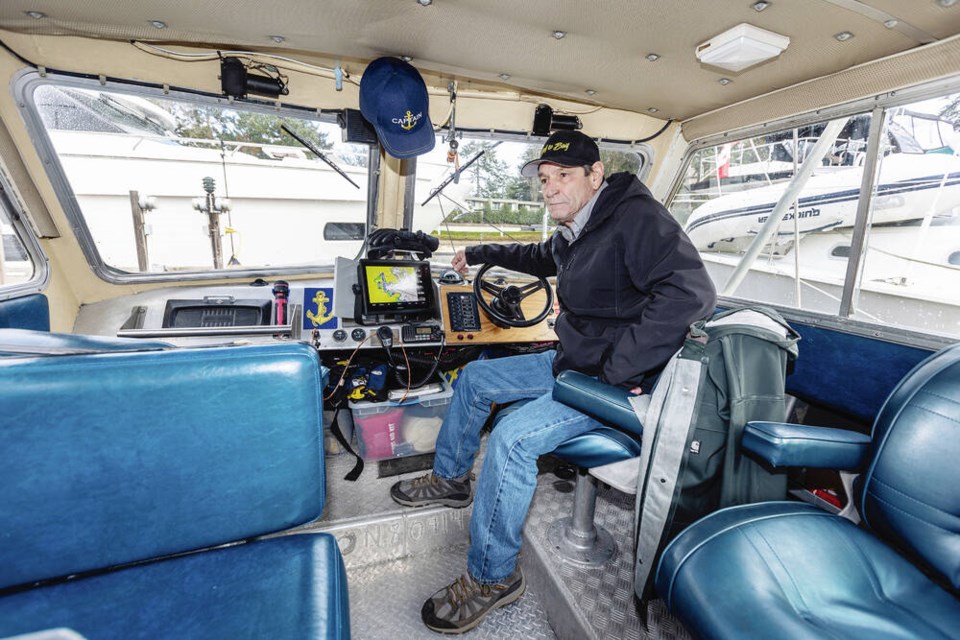A water taxi service between Sidney and the U.S. San Juan Islands is back on, but it comes with a steep price increase for passengers.
Bay to Bay Charters owner Miles Arsenault had been operating the service from Van Isle Marina to Roche Cove and Friday Harbour in Washington state for a month when he had the plug pulled Jan. 2 by Canadian border authorities.
Canada Border Services Agency said his taxi was considered a ferry and therefore not eligible to use its report-by-phone locations for customs clearance for passengers.
He was told he needed to arrive at a site designated for ferries, but the Sidney-Anacortes ferry terminal wasn’t an option because Washington state hasn’t provided ferry service to Sidney since 2019 and has shelved any resumption until 2030.
So, Arsenault said, CBSA offered a compromise, agreeing to send two officers to Van Isle Marina each time he arrives with passengers from the San Juan Islands.
The cost of those two officers, however, is $430 per trip. Arsenault, whose 23-foot aluminum boat is authorized by Transport Canada to carry up to eight passengers, said the fee would be divided among his customers for each crossing.
He charges $545 for two people and $55 for additional passengers within a group for the one-hour crossing from Sidney to Friday Harbour, which leaves Sidney at 9 a.m. from Van Isle Marina and returns from Friday Harbor at 11 a.m. Wednesday, Friday and Sunday.
Arsenault’s service to Roche Cove has been discontinued after port authorities there re-instated a ban on commercial vessels this spring. The commercial ban had been temporarily lifted during the pandemic.
Arsenault said the extra cost is significant, but he is resigned to it as the cost of doing business between two countries, provided it doesn’t tip him too far into the red.
When Arsenault looked into adding cross-border service last year, American officials told him they would allow him to dock on San Juan Island as long as he put up a bond through his insurance company, gave 24 hours notice of each trip, paid port fees on each occasion ($19 US in, $19 out) and had a manifest filled out when he arrived. A single U.S. border agent met him each time.
He pays about $1,100 in fees to the Americans a year.
Arsenault said he was told he could do something similar at Van Isle Marina, which has been designated as a place where boaters arriving from the U.S. can use a phone to report their presence to Canada Border Services Agency.
The CBSA has the option of sending agents to check out the arrivals, but on each of Arsenault’s previous crossings, the agency granted permission for his passengers — usually one or two of them — to disembark.
Arsenault said the Seattle-based Clipper ferry offered to share its CBSA presence in the Inner Harbour, but he declined as he’s reluctant to travel the Strait of Juan de Fuca with its unpredictable conditions, preferring the sheltered passage of the southern Gulf Islands.
Arsenault said he welcomes the change of heart by the CBSA, though he questions why the U.S. only uses a single customs officer while the CBSA prefers to send a pair at double the cost.
CBSA says it does not comment on specific cases, but water taxis are treated as ferries and, if operating outside designated terminals and hours, need to enter into cost-recovery agreements for border services officers.
Despite the added costs, Arsenault said his fares still represent a bargain compared to travelling by B.C. Ferries to the mainland, crossing the U.S. border and taking a ferry from Anacortes, Washington to the San Juan Islands.
“That’s two ferries and a border crossing, probably six to eight hours if everything goes right,” Arsenault said. “With me, dock to dock in fair weather, it’s an hour boat ride.”
So far he’s ferried several people across the U.S. boundary, including tourists and ships’ captains returning vessels to U.S. waters or those bringing ships from the U.S. to Sidney for repairs.
Arsenault is hoping the spring and summer will bring increasing demand for tourists to visit the Island and for Greater Victoria residents to discover the San Juan Islands and historic Friday Harbor, home to whale research in the Salish Sea.



